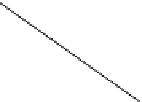Hardware Reference
In-Depth Information
Fig. 5.16 Two distinctly
different floating negative
impedance configurations
using CCII
emerging from
the nullor models of
Fig.
5.14
z
z
CCII-
CCII-
y
y
x
x
Z
L
2
1
z
z
CCII-
CCII-
y
x
x
y
Z
L
2
1
It may be mentioned that the four CCII+ based structures of Fig.
5.13
as well as
the two CCII
based structures of Fig.
5.16
, all are characterized by the terminal
equations: i
1
¼
i
2
¼
(
1/Z
L
)[V
1
-V
2
] and represent floating impedance
Z
L
,
between ports 1 and 2.
In the last, it is also worthwhile to mention that four electronically-controllable
negative resistance converters, each employing two electronically- tunable CCIIs,
have been advanced by Surakampontorn and Thitimajshima in [
55
]. Another
scheme of realizing floating current controlled resistance converter using electron-
ically controlled conveyor
(ECC) has been reported by Riewruja
and
Petchmaneelumka in [
126
].
5.2.8 Generalized Function Generator
In their seminal 1970 paper where the second generation current conveyor was
introduced (see reference [
3
] of Chap. 1) Sedra-Smith demonstrated how CCIIs
along with ideal diodes can be employed to realize a generalized function generator.
Their proposition is shown here in Fig.
5.17
Assuming the diodes to be characterized by the equation
I
s
e
v
d
=v
T
i
d
¼
ð
5
:
22
Þ
a straight forward analysis of the circuit, assuming all matched diodes, leads to the
following output equation:
i
m
1
1
i
m
2
2
i
m
n
n
I
0
¼
:::::
ð
5
:
23
Þ
with
m
1
þ




























































































































Search WWH ::

Custom Search